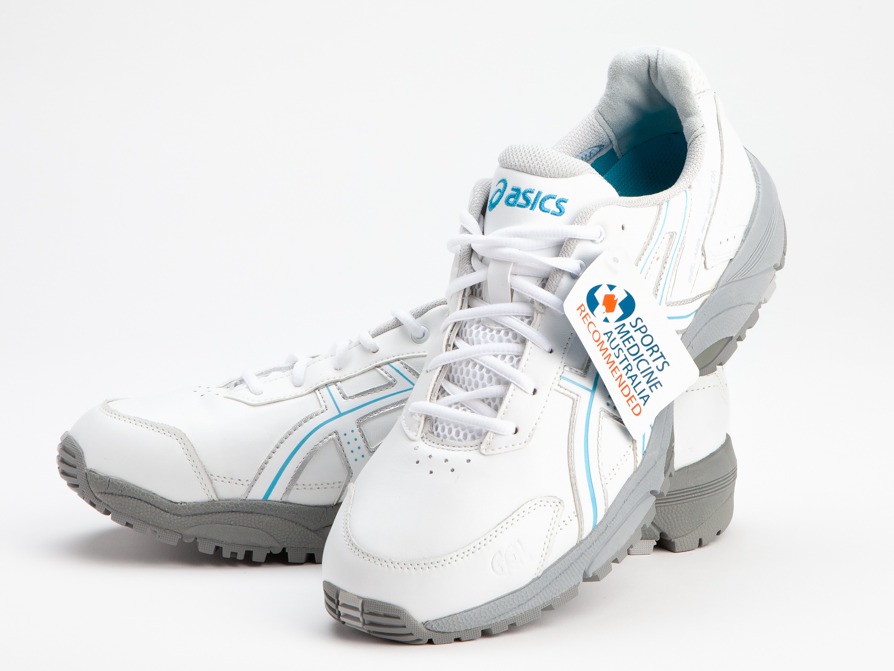4 Minute read
ASICS Oceania worked with University of Melbourne researchers to design a sports shoe that relieves the pain of knee osteoarthritis.
Key points
- ASICS Oceania developed the Gel-Melbourne OA shoe in partnership with University of Melbourne researchers.
- Knee osteoarthritis causes joint pain and inflammation, restricting movement and reducing quality of life.
- The shoe changes how the foot hits the ground while walking or running, decreasing stress on the knee and relieving the pain of osteoarthritis.
The outcome
ASICS Oceania partnered with the University of Melbourne to create the Gel-Melbourne OA, a shoe specifically developed to treat people with knee osteoarthritis.
The company, part of the global athletic brand ASICS, worked with University researchers to translate conceptual designs into a viable product. The Gel-Melbourne OA shoe was launched on the Australian market in 2012.
The shoe, which was designed to limit mechanical stress on knee joints, provides an accessible and affordable option to relieve the pain associated with knee osteoarthritis.

The need
As the most common disease of the joints, osteoarthritis is estimated to affect more than three per cent of the world’s population. Knee osteoarthritis is one of the most prevalent and costly forms of osteoarthritis in the developed world. It affects 10–25 per cent of women and 5–15 per cent of men aged 60 or older. Although most often found in the elderly, knee osteoarthritis can also affect overweight individuals.
Osteoarthritis is characterised by the breakdown of cartilage in the joints due to stress and inflammation. The joint pain, swelling and stiffness caused by knee osteoarthritis can discourage physical activity. This can lower the quality of life and raise the risk of other medical conditions, such as diabetes, obesity and cardiovascular disease.
As the world’s population ages and obesity rates rise, the incidence of knee osteoarthritis is expected to increase. Without a cure, treatments must focus on alleviating symptoms through behavioural and biomechanical interventions.
The research
When the foot hits the ground during walking or running, a force travels up through the lower limb to the knee. This mechanical stress causes the symptoms of knee osteoarthritis.
One method to reduce the pain associated with knee osteoarthritis is to divert or decrease this force. In the University of Melbourne’s Centre for Health, Exercise and Sports Medicine, physiotherapists Professor Kim Bennell and Professor Rana Hinman and biomechanist Tim Wrigley combined their expertise to develop orthotics for this purpose.
The researchers came up with two features that change how the force travels up the leg. They made a midsole that is soft in the middle and stiff on the sides, and a full-length wedge that angles the foot laterally by 4–6 degrees.
Working with ASICS Oceania, the researchers incorporated those features into a shoe, at the same time overcoming problems associated with inconsistent or incorrect use of orthotics.
Technology development history
The research team and ASICS Oceania joined forces under a two-year Australian Research Council (ARC) Linkage Project in 2009 to study the effects of shoe design on the biomechanics of the lower limbs. Together they developed, tested and validated the researchers’ shoe concept, creating a final prototype through an iterative process of refinement.
ASICS Oceania received an exclusive license to the background intellectual property and to any intellectual property arising from the project.
Soon after the project’s completion, the ASICS Gel-Melbourne OA shoe began production and was launched on the Australian market in 2012.
A clinical trial in 2016 compared the Gel-Melbourne OA shoe to a conventional ASICS shoe in 164 people with knee osteoarthritis. Both shoes improved pain and function. Subsequent analyses of the study’s results suggested that the Gel-Melbourne OA shoe was more beneficial for trial participants with moderate to severe knee osteoarthritis.
The partnership between ASICS Oceania and the University of Melbourne is ongoing. It includes investigations into the effects of female pubertal development and ASICS footwear on knee biomechanics during sporting movements, and the effects of female hormone fluctuations on muscle properties and foot biomechanics.
A further ASICS ARC Linkage Project to develop new athletic shoes to protect the knees of adolescent girls and young women was launched in 2018 with biomechanist Associate Professor Adam Bryant, also from the Centre for Health, Exercise and Sports Medicine. This ASICS shoe will be field-tested in netball, a sport with a high risk of serious knee injury.
Funding support
ARC Linkage Project (LP0990671)
ARC Linkage Project (LP150101041)
ARC Linkage Project (LP170100569)
Publications
Paterson KL, Kasza J, Bennell KL, Wrigley TV, Metcalf BR, Campbell PK, Hunter DJ, Hinman RS (2018) Moderators and mediators of effects of unloading shoes on knee pain in people with knee osteoarthritis: an exploratory analysis of the SHARK randomised controlled trial. Osteoarthritis and Cartilage 26(2): 227–235. doi: 10.1016/j.joca.2017.11.002
Bennell KL, Kean CO, Wrigley TV, Hinman RS (2013) Effects of a modified shoe on knee load in people with and those without knee osteoarthritis. Arthritis & Rheumatology 65(3): 701-709. doi: 10.1002/art.37788
Banner image: Investigating foot movement to develop a prototype of the Gel-Melbourne OA shoe.
First published on 27 April 2020.
Share this article
Case studyResearch Innovation and Commercialisation
Keep reading
-
Online approach works in treating knee osteoarthritis
Physiotherapy via Skype and online pain coping training is shown to be as effective in treating knee osteoarthritis, opening way for wider access.
-
Eavesdrop on Experts podcase episode: “Legs, ligaments and longevity”
Inside the University of Melbourne's Harry Brookes Allen Museum of Anatonomy and Pathology, we speak to Lund University professor of anatomy Stefan Lohmander.
-
Why partner with us
Partner with the University of Melbourne. Join a community where the world’s best minds help solve the biggest global challenges of our time.
-
Precision medicine with new drugs that stop fibrosis
Certa Therapeutics has developed a new class of drugs for patients with inflammatory and fibrotic diseases. They are based on research from the University of Melbourne and affiliated organisations.